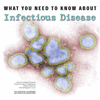Need to run to the grocery store? For some of us, this is relatively easy because we probably live fairly close to one. For others, a trip to a grocery store represents a significant transportation challenge. In the United States, “food deserts”, neighborhoods and communities that have limited access to affordable and nutritious foods, tend to be located in urban and rural low-income neighborhoods. People who live in these areas are less likely to have access to supermarkets or grocery stores that provide healthy choices for food. With limited or no access to food retailers or supermarkets that stock fresh produce, low-fat dairy, whole grains, and other healthy foods, these populations may be more likely to suffer from high rates of diabetes, cardiovascular disease, and obesity.
The Public Health Effect of Food Deserts: Workshop Summary discusses the public health effects—including the prevalence of obesity and the incidence of chronic diseases—of food deserts. This book offers insight on the extent of food deserts, their impact on individual behaviors and health outcomes in various populations, and effective ways to increase the availability of fruits and vegetables and to improve the food environment.
One serious health consequence of living in food deserts is, ironically, obesity. Without ready access to nutritious foods, people living in food deserts often have diets that are high in calories but low in nutritional value. To address this particular public health concern, the Institute of Medicine has published a number of reports that examine how we can roll back the obesity epidemic in the United States.
Bridging the Evidence Gap in Obesity Prevention: A Framework to Inform Decision Making examines obesity as a societal problem that affects whole populations, like those living in food deserts. This book features a practical, action-oriented framework to support the use of evidence in decision-making about obesity prevention policies and programs and sets a course for the development of new and relevant research.
The books mentioned above and others from the Institute of Medicine provide information and guidance for decision-makers to respond to the challenges of food deserts and their impact on our society.
 |
The Public Health Effects of Food Deserts: Workshop Summary In the United States, people living in low-income neighborhoods frequently do not have access to affordable healthy food venues, such as supermarkets. Instead, those living in “food deserts” must rely on convenience stores and small neighborhood stores that… |
 |
Bridging the Evidence Gap in Obesity Prevention: A Framework to Inform Decision Making To battle the obesity epidemic in America, health care professionals and policymakers need relevant, useful data on the effectiveness of obesity prevention policies and programs. Bridging the Evidence Gap in Obesity Prevention identifies a new… |
 |
Local Government Actions to Prevent Childhood Obesity The prevalence of childhood obesity is so high in the United States that it may reduce the life expectancy of today’s generation of children. While parents and other adult caregivers play a fundamental role in teaching children about healthy behaviors, even… |
 |
Community Perspectives on Obesity Prevention in Children: Workshop Summaries As the public health threat of childhood obesity has become clear, the issue has become the focus of local, state, and national initiatives. Many of these efforts are centered on the community environment in recognition of the role of environmental factors in… |
 |
Childhood Obesity Prevention in Texas: Workshop Summary Childhood Obesity Prevention in Texas summarizes the information gathered at a workshop held February 5-6, 2009, in Austin, Texas. At this workshop, committee members met with Texas lawmakers, public officials, and community leaders to exchange ideas… |
 |
Progress in Preventing Childhood Obesity: How Do We Measure Up? The remarkable increase in the prevalence of obesity among children and youth in the United States over a relatively short timespan represents one of the defining public health challenges of the 21st century. The country is beginning to recognize childhood… |
 |
Both the United Kingdom and the United States are grappling with nationwide epidemics of obesity. Obesity contributes to diabetes, cardiovascular disease, and some cancers, among other diseases. Although many people are aware of obesity’s causes and… |
 |
Joint U.S.-Mexico Workshop on Preventing Obesity in Children and Youth of Mexican Origin: Summary The Joint U.S.-Mexico Workshop on Preventing Obesity in Children and Youth of Mexican Origin was initiated by a desire to share experiences regarding the problem of obesity in children… |


























































































